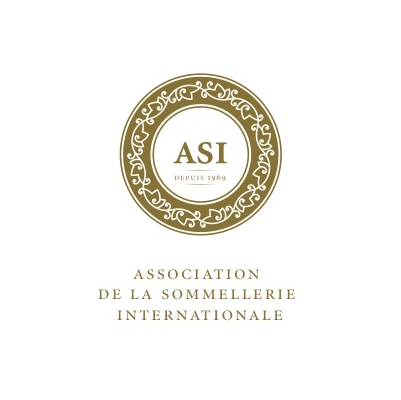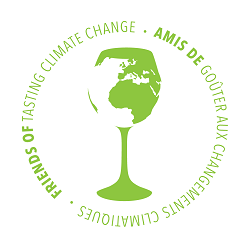Get a taste for “Greece… The Wines, not the Musical” from this write up by Sommeliers Australia member Haz Davies:
One of the perks of being a wine rep is the Monday afternoon wine tasting. It’s a chance to take a break from the rejection and mix up the monotonous; broaden your mind and refine your palate; maybe even learn a little something new!
Introducing Greece….the wines, not the musical. For all the pun intended in the title of the tasting; make no mistake, this was a serious affair. Arriving a little late, as all good Greeks would, I entered a grand old wood paneled room with a large banquet table surrounded by a dozen people each with half a dozen wines and a panel of three. Time to button up, shut up and pay attention. The panel consisted of coiffed Danny (Jeremy Prideaux, City Wine Shop’s Sommelier), his broody sidekick Kenickie (Matthew Brooke, Crown Resort’s Director of Wine) and the leading lady; Greek wine’s very own Sandy (Kavita Faiella, Founder & Director of Voyageur Selections).
Those that think they know wine know France; they appreciate the complexity of the Burgundian landscape, they recognize the subtle nuances of Bordeaux’s Left and Right Bank, Champagne is their bread and butter and the South of France is a holiday romance. Yet France’s history of viticulture only came to be with the founding of the Greek colony of Marseille. With only 56 indigenous grape varieties France is dwarfed in diversity by its southern neighbor, where 300 indigenous grape varieties have been growing for over 6000 years. With all but two varieties accounting for less than 5% of the overall production of wine, the Greek wine industry is a patchwork puzzle of grapes, regions and producers.
With such a long history of winemaking it was surprising to hear that today 80% of the wineries (1295 in total) are no older than 20 years old. The Ottoman Empire’s influence repressed the growth and development of the original Greek wine industry. Bouncing back from a long intermission, it is an exciting time to evaluate where Greek wine is today, and what we can hope to see in the years to come.
Unable to squeeze all 300 varieties into one Monday afternoon, we dabbled in three of the more common and representative red and white varieties (sadly, no rosé in the line-up as it was still in transit) followed by a deep dive into Assyrtiko; Greece’s 7th most popularly planted grape varietal and the popular red Xinomavro; Greece’s 5th most popularly planted grape varietal. If you’re looking out for Greek wines in bars and bottle shops these are your best bet. Greece’s most popularly planted varietal (at only 16% of the total) is Savatiano. Savatiano is best known for making Retsina; a wine famously associated with the 1980s Greek family holiday and infamously associated with a resinous and antiquated furniture aroma.
Starting with the Savatiano – we didn’t actually, but it’s a nice segway – she was soft and chalky, subtle in texture; best described as a Vermentino or a Semillon given its remarkable ability to age. The Greek tragedy of the tasting was the need to compare the lesser known Greek wines to the well-known varietals that have dotted our lists, shops and cellars for years. Finding comfort in the familiar.
The Robola was like a Riesling, the Vidiano resembled a Chardonnay, the Limiona showed hints of Gamay and the Agiorgitiko with the silkiness of a Merlot. It is worth noting the Greeks, as part of the EU and the Old World of wine, labels according to region and not variety; detracting from the importance of the grape and highlighting the influence of the land.
Having broadened our minds with an overview we refined our palates and tried three wines made from Assyrtiko. Acid threaded through all three wines; a necessary characteristic if the wines are to be enjoyed alongside the local citric cuisine. The subtle saltiness revealed the strong Aegean wind that whispers
among the low-lying basket vines that dot the Santorini hillsides. In this corner of the world, 80-year-old vines are young and low yields are desired. Greek viticulture places a new lens on our conventional idea of a vineyard.
From white to red; Xinomavro was up next. Those with established palates marveled at the chance to try examples of one variety from the same producer but different regions; a chance to appreciate the nuance of terroir. And then contrast two examples of Xinomavro from the same region but two different producers; a reflection of the unique education and influences that each winemaker has experienced; whether that be Burgundian, Bordeaux or another region of the world. Having brought knowledge of the greats back to the
motherland, today Greece’s winemakers are well placed to become the masters of their own, home grown heirs. The three expressions of Xinomavro were notably different in texture, weight, fruit and tannin. Sadly, I was at the stage of the day where more subtle differences were lost on me. My palate fatigued, I could vouch all the wines had their merits and determine my favorite; but past that I could only really confirm the red wines were indeed red wines.
Intent on keeping my curiosity piqued and my ignorance hidden; I steered away from the wines and asked about Greek society; what are they drinking and what do they think of their local wares? Having spent two impish years teaching watersports on the beautiful island of Zakynthos; my experience was limited to the long and late taverna nights filled with saganaki, souvlaki and rohypnol rosé; called thus thanks to its inherent ability to leave you face down on the floor with little -if lucky- no memory of all the empty carafes around you. Thankfully those hazy memories aren’t a true reflection of wine drinking Greece today. The big cities are witnessing the emergence of a strong wine bar culture driven by the under 40s who are eager to understand the influence of region and producer on style. For the golden oldies over forty wine has always been, and will always be a status symbol that is indulged in for the sole purposes of showing off to, and sharing with friends.
Masterclasses like these guide sommeliers and wine buyers through the less travelled landscapes of far off wine regions. As they pioneer the way with audacious wine lists and alternatives on shelves they educate and guide us through the unknown to help us find hidden drops and vinous delights. The world is a big place and wine grows throughout. Hidden stars are emerging in the shadows of the greats. So, grease the wheels and jump on the Greek train to help spread the good word.
Read more by Haz Davies at https://www.freerun.one/words







